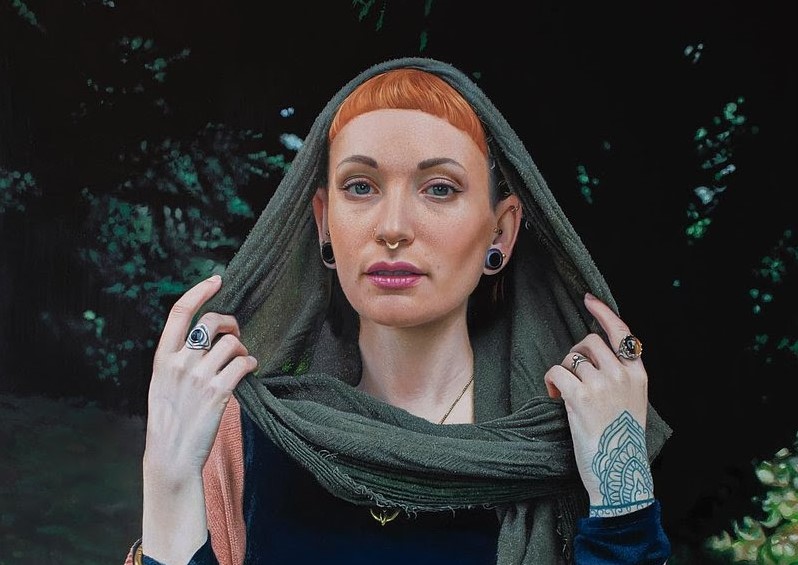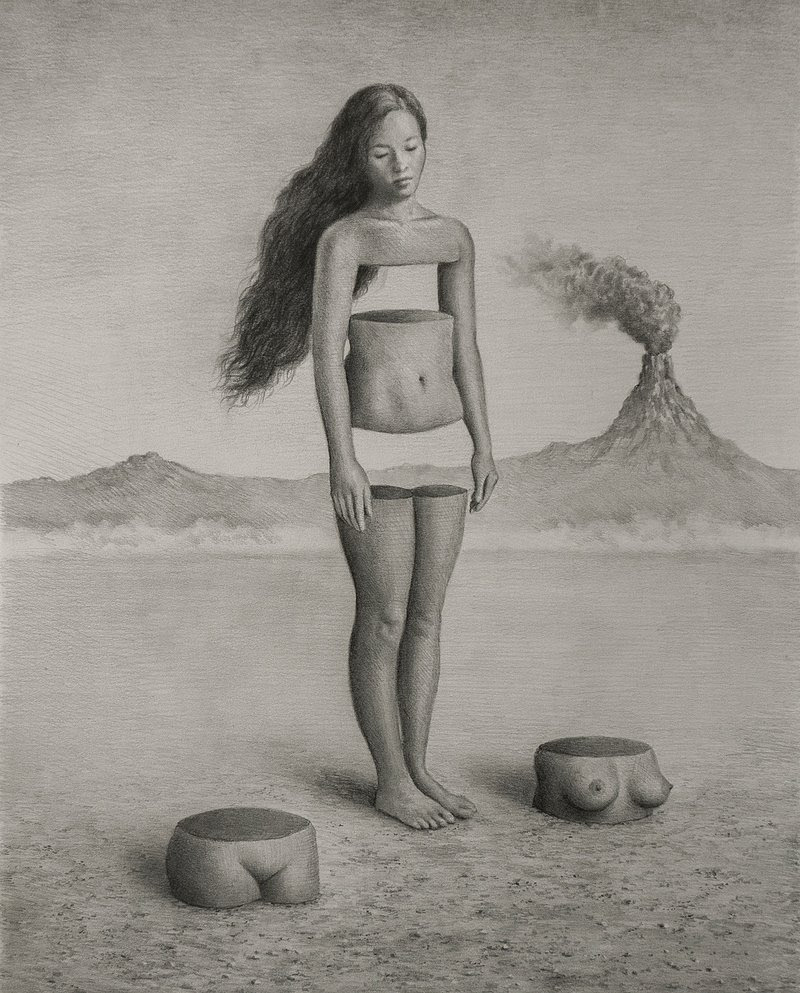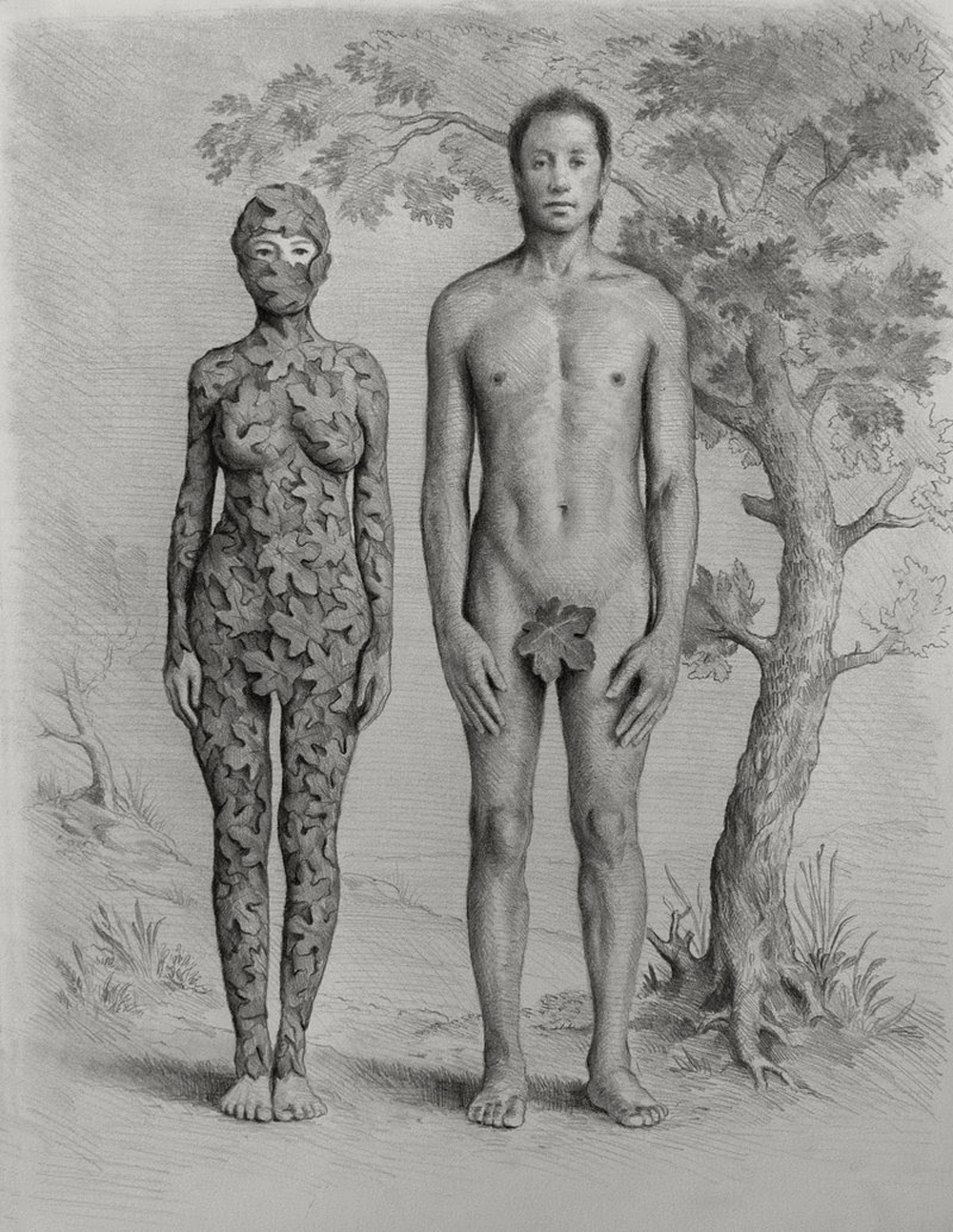"Painting is like breathing for me"

Mr Haghighi – first things first: where you were born, why you were drawn to visual art, and what training did you receive?
Raoof Haghighi: I was born into an artist family in Shiraz, Iran and started painting at the age of 3. I am self-taught. My father, himself an artist, had a huge influence on me. As I grew older, I fell in love with many different styles, yet I was always interested in painting people. I went on to study graphic design and architecture, despite being constantly drawn to art and painting. Honestly, I couldn't see myself doing anything else.
Were there limitations imposed on your work by living in Iran? I ask this because people have the impression that figurative drawings are considered haram. However, I'm also familiar with other Iranian artists who paint the human form.
Raoof Haghighi: Of course, I wasn't able to exhibit much of my work because it was figurative. Having said that, the restrictions sometimes made me more creative, and I worked around the restrictions the best I could to ensure my exhibited works delivered the same message.
You left Iran in 2009. Was this because of the political situation in the country at the time? (The Green Wave protests against the outcome of the presidential election) Or was it a matter of wanting to broaden your artistic horizons – or a little of both?

Raoof Haghighi: I moved to the UK to get married, as my fiancee was living there at the time. Unfortunately, I lost her to cancer in 2019. But, naturally, I had always wanted to leave Iran to broaden my artistic horizons.
Your work is an intriguing mixture of beautiful, hyperrealistic portraits and surrealism. Sometimes the two sides of your artistic personality collide in one painting, and other times you keep them separate.
What is it that fascinates you about the human figure that allows you to create such vivid portraits while also letting your imagination lead you off in some of the directions you travel?
Raoof Haghighi: I love the freedom in art. I never limit myself either. Each artistic style takes me to a different world. I like experimenting. I like surrealism and the freedom of it. Anything you imagine you can bring to life. I like details too. I enjoy spending months working on a single portrait, building the layers slowly, one at a time. I often find that things I go through in life – whatever they may be – eventually appear in my art.
Who do you consider your artistic influences? Why and how?
Raoof Haghighi: I like and appreciate any school of art, as long as it is good. I like so many artists from Vermeer to Andrew Wyeth, and Leonardo Da Vinci. In the case of some, I like the techniques used by the artist, in others, I admire their originality and the impact that has. I like the way Vermeer paints walls. I like the mystery surrounding Leonardo Da Vinci. The list could go on and on…
Is there any personal philosophy underpinning your work – something that pushes you to create or that influences your subject matter?
Raoof Haghighi: In general I like people to form their own interpretation about my artwork. Symbolism is fascinating to me and most of my art has an underlying meaning. Art can affect each person differently because of their own background and life experience. The same piece of art can produce a completely different response, for instance, something positive can be negatively construed by some and vice versa.
While few would consider portraiture political you've managed to make your work convey messages without being overt. I'm thinking of "Girl In The Cemetery" and "When the Guns Go Silent" in particular. This subtlety is particularly effective and thought-provoking – what do you hope viewers will take away from these types of paintings and maybe those two in particular?
Raoof Haghighi: I was living in California in 2018 where the school shooting happened and that was the inspiration for "When the guns go silent". "The Girl In The Cemetery" is dedicated to all the brave women in Iran who are currently fighting for their freedom, and it is my hope that in the future, the act of taking off their hijab does not endanger their lives, leading them to the cemetery!

Your upcoming show in April will feature works inspired by the recent upheavals in Iran. "Just Take Them and Leave Me Alone" – a pencil drawing depicting a woman standing with her breasts and genitals removed and set aside on the ground, and "The Outcast", showing a single woman naked save for her hijab towering over a crowd of tiny burka-wearing figures are both powerful images.
Can you describe what you were attempting with these two works and how you hope they impact your audiences?
Raoof Haghighi: I really enjoy creating an element of shock or surprise to the viewer, and sometimes I even surprise myself when I see the final result. These drawings are a combination of my feelings and the things I have witnessed or experienced in life.
Sometimes I don’t think about it when I create something and somehow things will manifest themselves from my subconscious! I hope these drawings can inspire people and bring more awareness about the situation not just in Iran, but anywhere in the world where people find that they are not able to express themselves freely.
As well as those two, you've created others inspired by the quest for freedom in Iran, specifically "Woman, Life, Freedom" and you've updated your "Adam and Eve" sequence to reflect the hypocrisy of the forced hijab edicts in Iran. What do you hope your work inspires in those who are struggling against the oppressive government in Iran?
Raoof Haghighi: I would love people around the world to be more aware of what is going on in Iran. And I wish to be a voice (however small) to raise awareness of their plight.
As an aside, you're also a musician. How do you find the two complement each other, and do you use the one to inspire the other?
Raoof Haghighi: I approach music in the same way as I do art. I like improvisation and anytime I need to refresh my mind, I switch between these two creative processes.
Interview conducted by Richard Marcus
© Qantara.de 2023